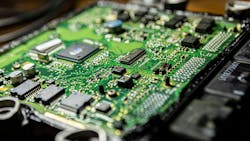Arm’s Cortex-R Core Tightens Its Grip on Automotive-Grade Silicon (Download)
Not every computer system can cut it under the hood.
These days, dozens of electronic control units (ECUs) can be spread out around a modern vehicle. Each unit generally only needs enough computing power to do a single task in areas ranging from body control to the powertrain. In many cases, these computer modules must be able to run safety-critical operations without interruptions. That means taking advantage of compact, real-time, and automotive-grade microcontrollers (MCUs).
Built on the same power-saving architecture used in everything from IoT devices to high-end smartphones, Arm’s Cortex-R family of real-time CPU cores is becoming one of the main building blocks of modern cars.
